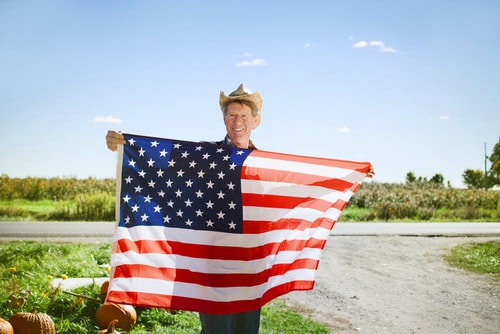Remembrance ceremonies going on throughout the world
By Diego Flammini, Farms.com
Each year, on November 11th, the world pauses to honor the men and women of the armed forces who decided to volunteer and risk their lives; knowing they may not come back, all for the protection of their home countries.

Many of the men and women who served were farmers and left their farms to support the war efforts, putting pressure on those back home to keep up with increased agricultural demands. As a result, tractor manufacturers had to change their advertising strategies.
A Ford ad in 1943 said that “women, children and old people” could operate the tractor to keep up with labor demands.
“I remember it vividly,” said Kelly Holthus in an interview posted on Living History Farm. “I was put on a tractor when I was about 11 years old. They couldn’t find anybody to drive the tractor.”
However, remaining farmers interested in purchasing tractors were at odds with the War Production Board, an organization whose objective was to convert other industries to focus on war needs. The metal, rubber and other materials needed to manufacture tractors were also needed to make supplies for the troops.
Women played a very important role in the war efforts with the creation of the Women’s Land Army.
Sometimes known as “farmerettes” they took on the responsibilities of producing food while the men fought overseas. During World War II, more than one million women undertook the farming responsibilities. 135,000 of whom were stationed in Oregon alone.
Here’s a brief look at corn, soybean and wheat in 1941 according to the USDA:
Corn
- 89,484,000 acres harvested
- 3 billion bushels
- $2 billion total farm value
- Farmers received about 85 cents per bushel
Soybean
- 11,000,000 acres harvested
- 106 million bushels
- $157 million total farm value
- Farmers received about $1.47 per bushel
Wheat
- More than 49 million acres harvested
- 981 million bushels
- Total farm value of about $1 billion
- Farmers received about $1.05 per bushel
Join the conversation and tell us about your memories of agriculture and farming during the wartimes.
Farms.com would like to thank the past, present and future veterans for their service and dedication to keeping the world safe.